This project is made possible through the partnership of WATER CHARITY and the NATIONAL PEACE CORPS ASSOCIATION. ![]()
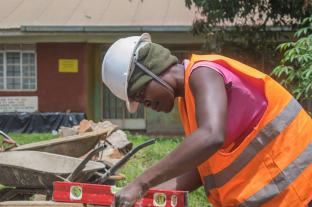 Location
Location
Mabira Forest, Uganda
Community Description
Mabira was gazetted as a forestry reserve in 1932, and has been designated an Important Bird Area, with high rates of biodiversity and vulnerable species. Despite official protection, encroachment by sugar plantations pollutes waterways and disrupts vital ecosystem services.
The surrounding villages rely on the forest for freshwater provision, erosion prevention, and nutrient cycling. Deforestation for brick burning exacerbates the problems caused by the sugar industry; the extraction of clay damages nearby wetlands, reducing their capacity to filter pollutants.
As central Uganda’s last significant block of most semi-deciduous forest, Mabira must remain intact to avoid further attempts to give away the reserve, as in 2011.
Six schools were previously selected from among the 30 that were designated by Mabira Forest Integrated Community Organisation (MAFICO) as requiring WASH facilities. Those projects are now underway.
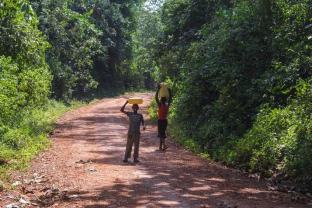 Problem Addressed
Problem Addressed
None of the schools in the area under consideration for this phase have water tanks, except for two, Buwoola and Kinoni. Buwoola still relies on a spring 2 km away (sending pupils to collect 400L a day), and reports poor water quality, citing discoloration and diarrhea. Kinoni still relies on a spring 3 km from the school (240L a day), and reports the local use of forest firewood for harmful burnt brick construction.
Project Description
This project is to construct six 20,000L water tanks and rainwater catchment systems in the following schools:
a) Mbogo Secondary and Vocational School – 33 girls, 21 boys
b) Muteesa I Memorial Senior Secondary School – 148 girls, 49 boys
c) Kinoni R/C Primary School – 68 girls, 70 boys
d) Buwoola C/U Primary School – 90 girls, 94 boys
e) Kisaasi Primary School – 138 girls, 112 boys
f) Bugomba C/U Primary School – 121 girls, 101 boys
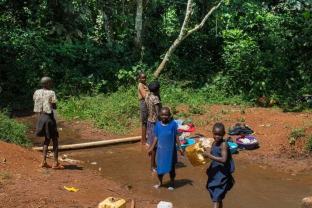 The tanks will be built from Interlocking Stabilized Soil Block (ISSB) technology, which does not require firewood, unlike traditional burnt bricks, saving precious tree cover. The tank blocks are curved to suit their purpose, and made using a manual press. They will be made and used by ISSB masons, Ugandan youths trained by the Haileybury Youth Trust (HYT) in this innovative technology.
The tanks will be built from Interlocking Stabilized Soil Block (ISSB) technology, which does not require firewood, unlike traditional burnt bricks, saving precious tree cover. The tank blocks are curved to suit their purpose, and made using a manual press. They will be made and used by ISSB masons, Ugandan youths trained by the Haileybury Youth Trust (HYT) in this innovative technology.
Separate taps will be built away from the tanks to ensure access and security, and to facilitate repairs. Subsoil, a key component, will be sourced, mixed with sand, a little (5%) cement and waterproofing, compressed into blocks, and cured in the sun for 28 days. Masons will then utilize the blocks’ interlocking feature to build the tank, plastering and painting as well as roofing it.
Larger tanks were chosen to better serve the needs of the schools, and to make use of the roof areas for collection.
The project will be implemented either with a team of 6 HYT graduates, or 3 graduates and 3 new trainees.
Water Charity funds will be used to purchase materials not readily available, such as the murram (a gravelly lateritic material), cement, sand, roofing timber, iron roofing sheets, and paint, as well as to pay the masons’ wages and project management fees.
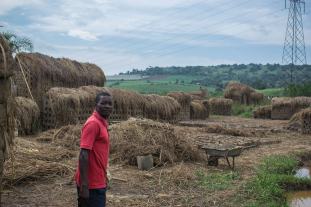 The various parent-teacher associations and others in the community will feed the masons, as well as provide them with onsite helpers (e.g. water-carriers), accommodation, site security and general support. Not only does such participation increase a community’s sense of ownership of the project, but ISSB is also more resistant to the damages suffered by previous tanks.
The various parent-teacher associations and others in the community will feed the masons, as well as provide them with onsite helpers (e.g. water-carriers), accommodation, site security and general support. Not only does such participation increase a community’s sense of ownership of the project, but ISSB is also more resistant to the damages suffered by previous tanks.
Project Impact
598 girls and 447 boys plus members of the surrounding community, will benefit from the project.
Project Administration
This project will be managed by Charlie Tebbutt, Assistant Country Manager, HYT Uganda. Under Charlie’s direction, the Kagumba Primary School ISSB Tank Project – Uganda and the Kayembe Primary School ISSB Tank Project – Uganda were recently completed.
Monitoring and Maintenance
The schools will monitor the use of the tanks, maintain them, and repair them as needed.
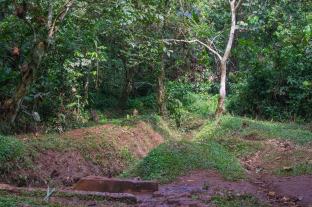 Comments
Comments
HYT’s rainwater harvesting tank program addresses several of the region’s challenges. Firstly, the tanks make use of regular rainfall to provide an alternative water source to polluted springs and open wells. Secondly, communities are introduced to sustainable ISSB technology, and environmental awareness is disseminated through specific training modules and practices. Thirdly, local masons gain employable skills, offering them an environmentally-friendly alternative to working in sugar cane cultivation on forest land.
Let Girls Learn
The project will accrue to the benefit of girls, as it will decrease the time needed to fetch water, and increase the time they will be able to stay in school.
A reliable water source at school will improve their hygiene and health, which is especially important during the time their time of menstruation.
Project Funding
The funds to implement this series of 6 rainwater catchment systems have been provided by an anonymous donor. If you like this project, your donation using the Donate button below will be used to expand the program to include other needed communities.